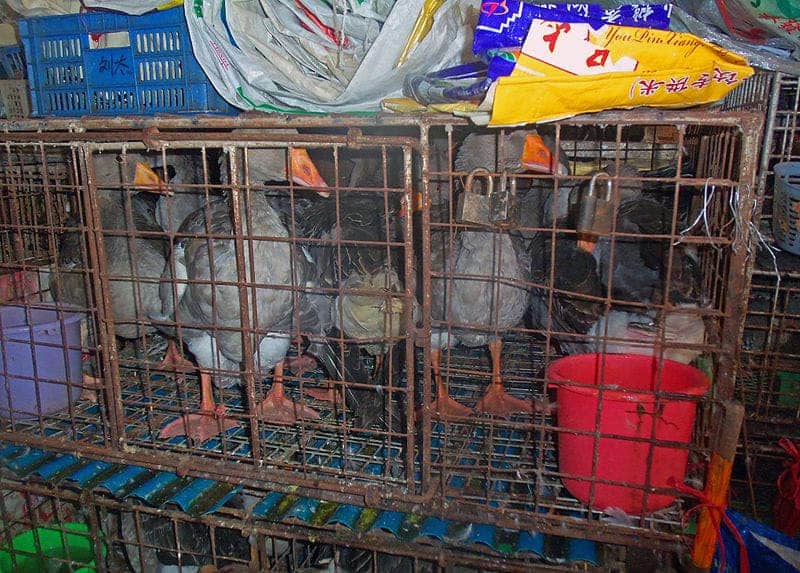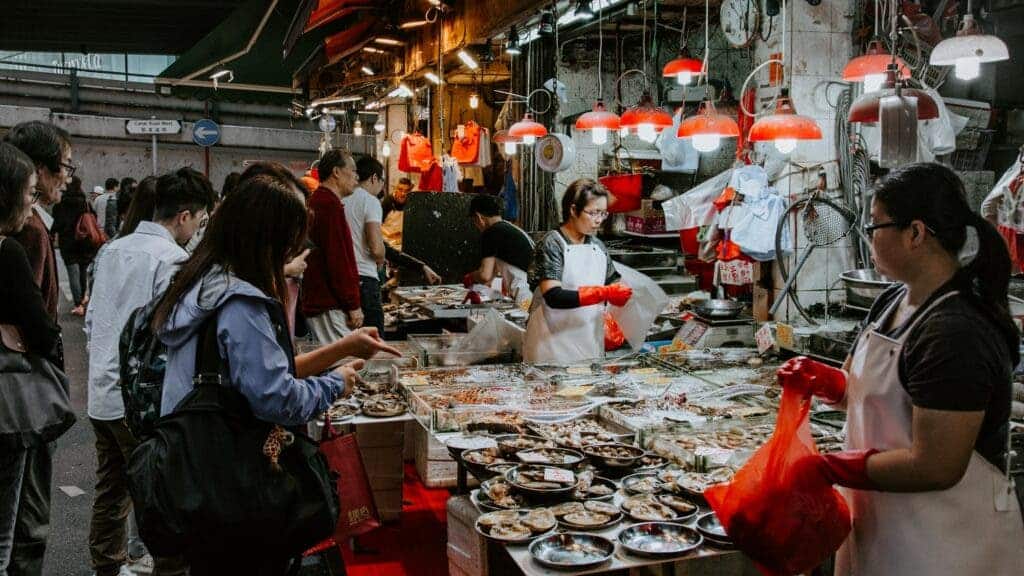Hunan ... Wet Markets ... Business As Usual
"Banning wet markets is not only going to be impossible, but will also be destructive for urban food security in China as they play such a pivotal role in ensuring urban residents' access to affordable and healthy food."
Dr.Zhenzhong Si, research associate, University of Waterloo
"[The coronavirus was a] direct result [of unsanitary markets. It is] mind-boggling [that the markets remain open]."
"I would like to see the rest of the world really lean with a lot of pressure on those countries that have that [unsanitary markets]."
Dr.Anthony Fauci, director, National Institute of Allergy and Infectious Diseases, U.S.
"The closest thing to wet markets in Western countries are farmers' markets where you can buy products from independent vendors."
"People depend on wet markets for vegetables, fruits, meat and fish."
Jian Yi, founder, Good Food Academy
 |
| People wearing face masks in a wet market as residents in Mei Foo district protest against government plans to convert the Jao Tsung-I Academy a local heritage site into a quarantine camp amid the outbreak of the novel coronavirus which began in the central Chinese city of Wuhan, in Hong Kong on February 2, 2020. |
A 2018 study out of Wilfrid Laurier University in Canada and Hungry Cities Partnership examined urban food systems, finding that 90 percent of households in Nanjing in eastern China, with a population of over eight million people, bought food from wet markets. Within the city, 75 percent of shoppers visited a wet market at least five times weekly.
Wet markets' popularity in China results from their convenience, where products are thought of as more affordable, and fresher than their counterparts procured in many city supermarkets. Pigs, lambs and cows are permitted to be butchered only in special slaughtering factories, not on site, although meat sold at the markets is not packaged. Live fish and chickens are common in the markets as they are all over Asia.
 |
| Ducks in cages at a wet market in China. Credits: Daniel Case/Wikipedia. |
Well-managed, hygienic wet markets are common within and close to larger cities, while in others, concern over hygiene can be less of a focus, particularly within small communities. The central and local governments attempted to regulate wild animal trading at markets, bringing in occasional checks to improve sanitation. China's wild-animal farming industry employs over 14 million people.
Valued at an estimated $103 billion in 2016, according to the Chinese Academy of Engineering, environmentalists, researchers and Chinese state media called for stricter regulations of exotic animal trade. The National People's Congress under pressure with the spread of the virus, announced a ban on trading wild terrestrial animals for human consumption. It failed, however, to address the trade of exotic animals for use in traditional Chinese medicines, fashion or entertainment.
Chinese traditional medicine remains firm in the belief that some exotic animals represent benefits to human health, and the ongoing exploitation of such exotic wild animals has fuelled illegal smuggling and the trade of species such as the endangered pangolin. But in fact, a wide range of animal species endangered or close to extinction, from snakes to rhinoceros, tigers, bears, antelope, and more are continually sacrificed to traditional medicine.
Although an overhead sign reads: "No slaughtering and selling live animals", at the Baishazhou wet market, one of the largest in Wuhan, the city where the novel coronavirus first emerged, it is without doubt invisible to those with stalls in the market as well as city residents who regularly visit the newly-reopened market which had been closed during the months' long lockdown when COVID raged in the city.
 |
| Image credits: Adli Wahid. |
It was Hunan's Huanan Seafood Wholesale Market, one of the largest aquatic wholesale markets in central China, where the novel coronavirus was first to emerge. Now, with China seeing its commercial enterprises re-opening and the economy prepared to surge ahead once again with production of goods and commodities gearing into full swing, all the closed wet markets are returning to life, seen as indispensable to the Chinese way of life.
Over 1.4 million people worldwide have been infected with the coronavirus, with an immense death toll wherever it strikes, and the world is not ready for the very food sellers that offered live animals for the dinner table to resume business as usual, when that usual business has been linked to this devastating virus. All the more so, that it is not the first zoonotic virus to be unleashed at previous junctures in recent history with devastating results in deadly epidemics.
Close contact with wild animals at the market has been acknowledged widely as being responsible for the leap from animal to human receptors resulting in the current global pandemic. Scientists believe that the deadly disease leaped to humans from wild animals through an intermediary species like infected bats. The wet markets are critical to the livelihood of millions of farmers and small vendors, throughout Chinese communities. A worrisome, living conundrum.
 |
| A man wearing a face mask rides a bicycle on a street in Wuhan in China’s central Hubei province on April 8, 2020, as travel restrictions to halt the spread of the COVID-19 coronavirus were lifted in the city. (Photo by Hector RETAMAL / AFP) |
Labels: China, Global Pandemic, Hunan, Novel Coronavirus, Wet Markets
0 Comments:
Post a Comment
<< Home